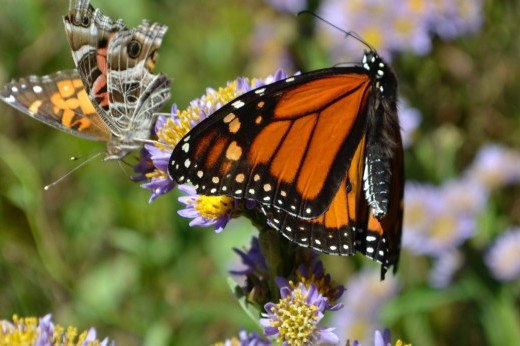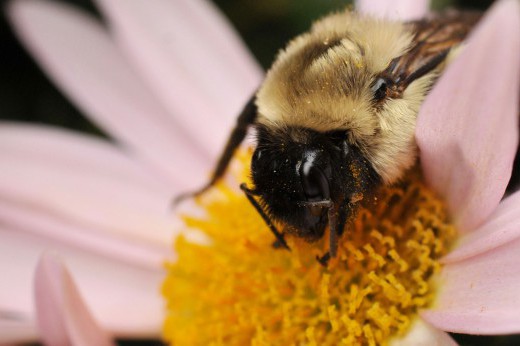Across the grounds of Brooklyn Botanic Garden, asters and goldenrods are beginning to shine. You can spot their dainty, mounded, purple-hued blooms and swooping, yellow clusters in the Native Flora Garden, the Shelby White and Leon Levy Water Garden, and the Discovery Garden, on the Robert W. Wilson Overlook, and along Belle’s Brook, the area I tend.
Ecologically minded gardeners love growing goldenrods (Solidago spp.) and asters (a term we’ll keep using here, though many species native to North America now belong to the genera Symphyotrichum and Eurybia). Both belong to the vast Asteraceae or daisy family.
As The New York Times illustrated in a 2020 interview with former BBG gardener Uli Lorimer, this late-summer pairing offers crucial support to native insects, and blooms after many other species have already flowered—providing both beauty and wildlife resources from midsummer all the way into late autumn.
.jpg)
So, who might you find gracing these distinctive flowers?
Both goldenrods and asters provide sustenance, breeding sites, and overwintering spaces for numerous native species of bumble bees, long- and short-tongued bees, wasps, flies, butterflies, moths, beetles, spiders, and more.
-on-Solidago-canadensis-(UL).jpg)
Pearl crescent butterflies, for example, draw nectar with their tubular tongues, or proboscises, from a variety of plants, including asters, which offer flower clusters arranged as broad landing spaces. After mating, females lay eggs under the leaves of aster species.
According to pollinator conservationist Heather Holm, gynes (future queen bees)—including those of the endangered rusty patched bumble bee—consume goldenrod, aster, and other native plant nectar to build fat stores in preparation for their winter hibernation.
-on-Symphyotrichum-novae-angliae-(UL).jpg)
-on-Solidago-puberula-(UL)_.jpg)
Mason bees of the genus Hoplitis nest and create brood cells in the pithy stems of asters, goldenrods, and other plants, forming partitions by chewing leaves into a paste. And leaf beetles also live on and eat these plants. The young of some species, like the goldenrod leaf miner (Microrhopala vittata), tunnel into the leaves to eat.
.jpg)
Galls, a type of external growth on plants, offer another fascinating interaction worth noting. Moths, flies, and midges form galls with several goldenrod species. The galls are created when eggs are laid on a stem and their larvae enter the plant, creating a swelling where the larvae eat and overwinter—in some cases providing a nutritious snack for birds.
Though some aster and goldenrod species have a reputation for being unruly and competitive, gardeners can keep them in balance by thinning them out or dividing and transplanting when needed. Many species, like New York aster (Symphyotrichum novi-belgii) and licorice goldenrod (Solidago odora), are easy to maintain in a garden.
A “garden ecologist”—as Larry Weaner and Thomas Christopher put it in their book Garden Revolution: How Our Landscapes Can Be a Source of Environmental Change—will be generously rewarded with a vibrant insect community, whose intricate relations often take place out of human sight.



